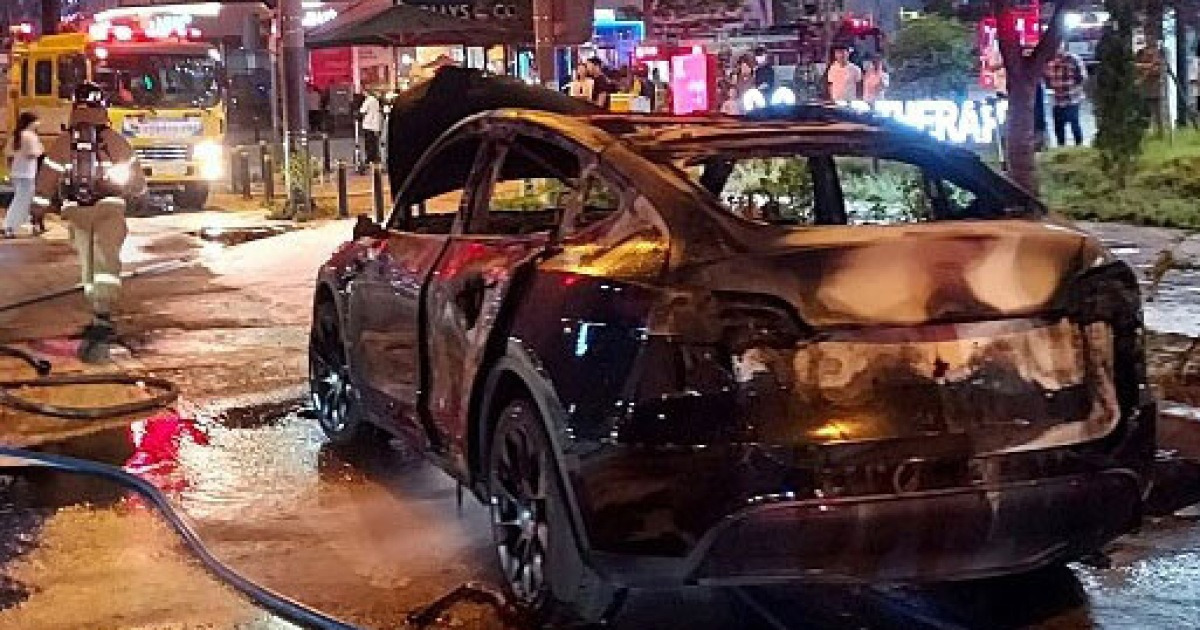"전기차 화재의 44%가 배터리 시스템의 절연 문제와 연관되어 있으며, 이는 설계 단계에서의 철저한 검증이 필요함을 시사합니다." - EV Safety Report 2023, Global EV Safety Institute
전기차 시대의 숨겨진 위험: 절연 설계의 중요성
"전기차 화재의 44%가 배터리 시스템의 절연 문제와 연관되어 있으며, 이는 설계 단계에서의 철저한 검증이 필요함을 시사합니다."
- EV Safety Report 2023, Global EV Safety Institute
전기차 산업이 급성장하면서 배터리 시스템의 전압은 끊임없이 상승하고 있다. 기존 400V 시스템을 넘어 800V 이상의 초고압 시스템이 등장하면서, 배터리 절연 기술은 그 어느 때보다 중요한 화두로 떠오르고 있으며, 특히 절연 IC의 선택과 설계는 전기차의 안전성을 결정짓는 핵심 요소로 자리잡고 있다.
치명적 위험을 동반하는 절연 설계 실패
절연 설계의 실패는 단순한 성능 저하를 넘어 치명적인 사고로 이어질 수 있다. 특히 배터리 시스템의 열폭주(Thermal Runaway) 현상은 가장 우려되는 위험 요소이다. 한번 시작된 열폭주는 연쇄반응을 일으켜 배터리 팩 전체의 폭발로 이어질 수 있으며, 일반적인 소화 장비로는 진압이 거의 불가능한 상황을 초래할 수 있다.
2023년 전북 전주에서 전소된 테슬라 차량
배터리 절연 IC 설계의 핵심 요소
- 절연 내압 설계의 새로운 패러다임
현대의 전기차 배터리 시스템 절연 IC는 기본적으로 800V 이상의 작동 전압을 안정적으로 지원해야 한다. 여기에 더해 순간적인 과전압에도 견딜 수 있는 서지 보호 능력이 필수적이다. UL과 IEC의 엄격한 인증 기준을 충족하는 것은 기본이며, 실제 작동 환경에서는 이보다 더 높은 안전 마진이 요구된다.
- 실시간 모니터링 시스템의 진화
최신 절연 IC는 단순한 전압 차단을 넘어 지능적인 모니터링 기능을 제공해야 한다. 절연 저항값을 실시간으로 측정하고, 미세한 누설 전류도 정확하게 감지할 수 있어야 한다. 특히 이상 징후 발견 시 밀리초 단위의 빠른 응답 속도로 시스템을 안전하게 차단할 수 있어야 한다.
- 극한 환경에서의 신뢰성 확보
전기차용 절연 IC는 극한의 환경 조건에서도 안정적인 성능을 보장해야 한다. -40°C부터 +125°C에 이르는 광범위한 온도 범위에서의 동작은 물론, 고습도 환경과 지속적인 진동에도 견딜 수 있어야 한다. 더불어 차량 내 다양한 전자기 간섭(EMI)에도 영향받지 않는 견고한 설계가 필수적이다.
현장에서 발견되는 설계 취약점
- 비용 절감으로 인한 안전성 저하
일부 제조사들이 비용 절감을 위해 절연 IC의 사양을 낮추는 사례가 발견되고 있다. 이는 매우 위험한 접근법이다. 실제로 최근 발생한 전기차 화재 사고의 상당수가 부적절한 절연 설계와 연관되어 있다는 점은 시사하는 바가 크다.
- 테스트 범위의 한계
절연 성능 테스트가 제한된 조건에서만 이루어지는 것도 문제점으로 지적된다. 실제 도로 주행 환경에서 발생할 수 있는 다양한 스트레스 상황을 모두 고려한 종합적인 테스트가 필요하다.
미래 기술 전망
- AI 기반 예측 관리 시스템
절연 상태를 AI 알고리즘으로 분석하여 잠재적 위험을 사전에 감지하는 기술이 개발되고 있다. 이는 기존의 단순 모니터링을 넘어 예방적 유지보수를 가능하게 할 것으로 기대된다.
- 새로운 절연 소재의 등장
기존 실리콘 기반 절연체를 넘어 갈륨 나이트라이드(GaN)나 실리콘 카바이드(SiC) 등 새로운 소재를 활용한 절연 IC가 연구되고 있다. 이는 더 높은 전압과 온도에서의 안정적인 동작을 가능하게 할 것이다.
전기차 배터리 시스템의 안전성은 절연 IC의 설계 품질에 크게 좌우된다. 비용 절감을 위해 절연 설계의 품질을 타협하는 것은 탑승자의 안전을 위협하는 위험한 선택이다. 앞으로도 더욱 강화되는 안전 규제와 함께 절연 기술의 중요성은 계속해서 커질 것으로 예상된다. 전기차 제조사들은 이러한 추세를 주시하며, 안전을 최우선으로 하는 설계 철학을 견지해야 할 것이다.

